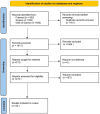Application progress of artificial intelligence in managing thyroid disease
- PMID: 40600013
- PMCID: PMC12208828
- DOI: 10.3389/fendo.2025.1578455
Application progress of artificial intelligence in managing thyroid disease
Abstract
Artificial intelligence (AI) has been used to study thyroid diseases since the 1990s. Previously, it mainly concentrated on the diagnosis of thyroid function and distinguishing benign from malignant thyroid nodules. With the rapid development of machine and deep learning, AI has been widely used in multiple areas of thyroid disease management, including image analysis, pathological diagnosis, personalized treatment, patient monitoring, and follow-up. This review systematically examines the evolution of AI applications in thyroid disease management since the 1990s, with a focus on diagnostic innovations, therapeutic personalization, and emerging challenges in clinical implementation. AI not only reduces the subjectivity associated with ultrasound examinations but also enhances the differentiation rate of benign and malignant thyroid nodules, thereby reducing the frequency of unnecessary fine-needle aspirations. AI synthesizes multimodal data, such as ultrasound, electronic health records, and wearable sensors, for continuous health monitoring. This integration facilitates the early detection of subclinical recurrence risk, particularly in patients who have undergone thyroidectomy. Despite the broad prospects of AI applications, challenges related to data privacy, model interpretability, and clinical applicability remain. This review critically evaluates studies across the ultrasound, CT/MRI, and histopathology domains, while addressing barriers to clinical translation, such as data heterogeneity and ethical concerns.
Keywords: artificial intelligence; deep learning; pathology; radiomics; thyroid nodule; ultrasonography.
Copyright © 2025 Lu, Wu, Chang, Zhang, Lv and Sun.
Conflict of interest statement
The authors declare that the research was conducted in the absence of any commercial or financial relationships that could be construed as a potential conflict of interest.
Figures
Similar articles
-
Advancements in AI based healthcare techniques with FOCUS ON diagnostic techniques.Comput Biol Med. 2024 Sep;179:108917. doi: 10.1016/j.compbiomed.2024.108917. Epub 2024 Jul 25. Comput Biol Med. 2024. PMID: 39059212 Review.
-
Research status, hotspots and perspectives of artificial intelligence applied to pain management: a bibliometric and visual analysis.Updates Surg. 2025 Jun 28. doi: 10.1007/s13304-025-02296-w. Online ahead of print. Updates Surg. 2025. PMID: 40580377
-
Application Value of Deep Learning-Based AI Model in the Classification of Breast Nodules.Br J Hosp Med (Lond). 2025 Jun 25;86(6):1-19. doi: 10.12968/hmed.2025.0078. Epub 2025 Jun 15. Br J Hosp Med (Lond). 2025. PMID: 40554435
-
Artificial intelligence in the management of metabolic disorders: a comprehensive review.J Endocrinol Invest. 2025 Jul;48(7):1525-1538. doi: 10.1007/s40618-025-02548-x. Epub 2025 Feb 19. J Endocrinol Invest. 2025. PMID: 39969797 Review.
-
The impact of artificial intelligence on the endoscopic assessment of inflammatory bowel disease-related neoplasia.Therap Adv Gastroenterol. 2025 Jun 23;18:17562848251348574. doi: 10.1177/17562848251348574. eCollection 2025. Therap Adv Gastroenterol. 2025. PMID: 40556746 Free PMC article. Review.
References
-
- Karakitsos P, Cochand-Priollet B, Guillausseau PJ, Pouliakis A. Potential of the back propagation neural network in the morphologic examination of thyroid lesions. Anal Quant Cytol Histol. (1996) 18:494–500. - PubMed
Publication types
MeSH terms
LinkOut - more resources
Full Text Sources
Medical



